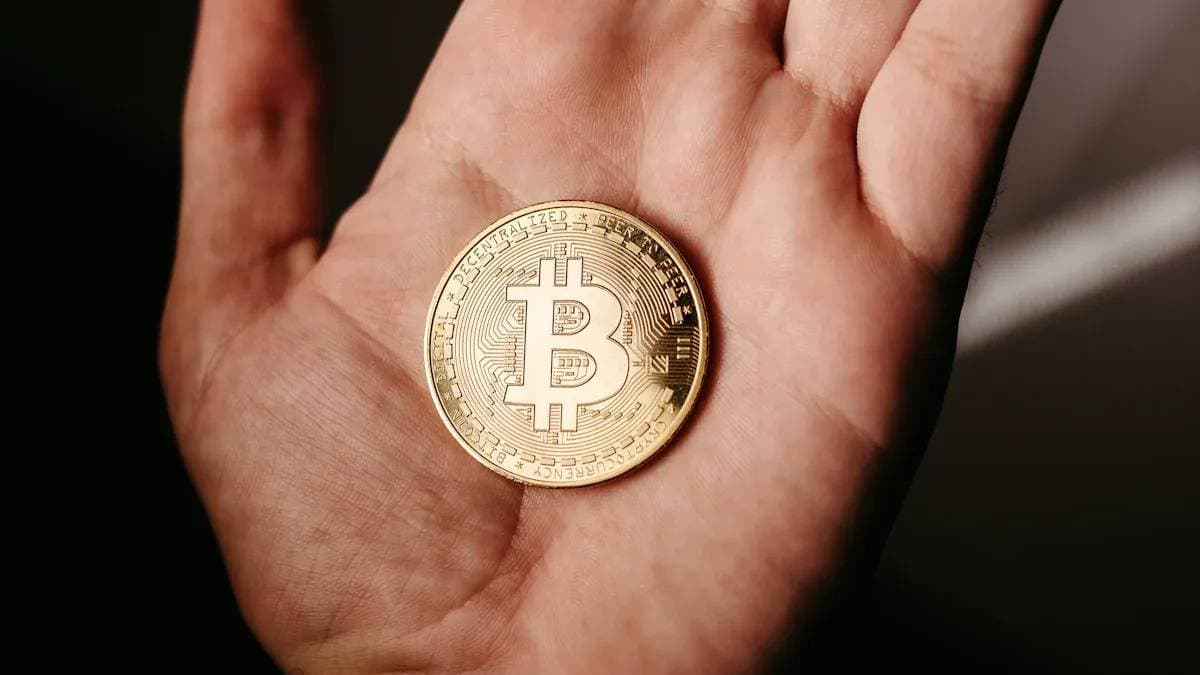- EasyCard
- Trade
- Help
- Announcement
- Academy
- SWIFT Code
- Iban Number
- Referral
- Customer Service
- Blog
- Creator
How to Successfully Transfer Gift Card Funds to a Venmo Account
Although a Vanilla gift card cannot be directly transferred to Venmo, this article will provide a detailed explanation of several practical indirect methods. If you have the need for remittance, BiyaPay also supports convenient remittance services in most regions around the world, and we will introduce it in detail later.

Can a Vanilla Gift Card Be Directly Transferred to Venmo?
A Vanilla gift card is a prepaid card, usually issued by the Visa or Mastercard network, and is used for consumption payments, rather than being associated with a bank account or an interconnected wallet. Although Venmo supports Visa-branded payment tools, it does not consider gift cards as a regular payment source and does not allow them to be directly added as a funding source. Therefore, users cannot directly transfer the amount on the card to their Venmo balance.
The main reason for this restriction is that Venmo requires the payment source to have traceability and a security verification mechanism. Vanilla gift cards are usually issued as a one-time item or cannot be verified with a real name, which does not meet this requirement. This also reminds users that before using a gift card, they should clearly understand its available usage range and compatible platforms to avoid restrictions on funds.
How Can I Use the Funds on a Gift Card for Venmo?
Although it cannot be directly transferred, there are still several indirect ways to achieve its practical use:
Firstly, you can bind the Vanilla card to a supported virtual Visa debit card service. For example, create a virtual card through certain digital wallet platforms and then associate it with Venmo. In this way, the balance of the gift card can be converted into a recognizable payment tool. However, these virtual debit card service platforms may change. Some platforms may stop their services or no longer support the binding of Vanilla gift cards.
Secondly, after using the Vanilla card for consumption, you can split the bill with your friends, and let your friends transfer the equivalent amount back to you through Venmo. For instance, if you use the gift card to book movie tickets or pay for takeout for your friends, they can repay you via Venmo. Although this method is indirect, it is very practical for daily use.
In addition, some online platforms support the purchase of Venmo-compatible recharge cards or platform balances using gift cards. This method is suitable for users who are willing to bear a small handling fee but want to use the balance flexibly.
How Long Does It Usually Take to Transfer Funds from a Gift Card?
The length of the transfer process depends on the platform used, the type of card, and whether verification is required.
If you transfer the gift card funds to a virtual debit card through an intermediary platform and then add it to Venmo, it generally takes 3 to 5 working days. This is because it involves multiple links such as fund verification, card binding, and security review. Some platforms offer an expedited service, but an additional fee may be charged.
If it is through splitting the cost after consumption, the speed of the transfer depends on the time when your friends make the payment through Venmo, and it can usually arrive within a few minutes. This method is faster and more flexible, but it requires cooperation with others.
It should be noted that although the validity period of the Vanilla card will not be affected by the transfer, if you delay using it, the transfer fails, or the funds are frozen, you may suffer losses due to expiration. Therefore, it is recommended to deal with it as soon as possible or record the expiration date of the card.
How to Transfer the Funds on a Gift Card to a Bank Account?
Transferring the balance of a Vanilla card to a bank account is not a direct path, but it is operationally feasible. The main steps are as follows:
First, you need to confirm whether the card supports fund withdrawal or balance transfer. Some gift cards are only for consumption purposes and cannot be used for transfer or recharge. You can check the information on the back of the card or visit the official website to learn the detailed terms.
Next, you need to register the gift card and create a user account so that you can access the card balance and operation interface online. After successful registration, enter your bank account or the account information that supports ACH transfer on the platform, and then submit the transfer application.
Some platforms may also require you to upload identity information for verification, especially when the amount is large or the transfer frequency is too high. The whole process may take 3 to 7 working days, and the specific time depends on the processing speed of the card issuer and the bank.
After the transfer is completed, you can choose to recharge through the bank account associated with Venmo again to achieve the final transfer of funds from the gift card to Venmo.
Does a Vanilla Gift Card Support International Transfers?
A Vanilla gift card itself does not support international remittance. It is mainly used in the United States, and all operations such as consumption, transfer, and binding are based on the domestic network of the United States. If users try to use the card on cross-border platforms, they often fail due to address verification or currency incompatibility.
If you want to use the balance in the card for cross-border purposes, such as remitting money to an overseas relative’s account or a non-US platform, then you must use a dedicated third-party remittance service, such as a remittance platform that supports the recharge of gift cards within the United States. Such services usually charge a certain handling fee and require users to verify the card and identity information.
Before using these services, it is recommended to fully compare the reputation, exchange rate, arrival time, and handling fee structure of the remittance platforms, and choose a safe and reliable platform. You can also check user reviews, whether it is regulated, and other information to ensure the security of funds during the transfer process.
Gift Card Transfer
The factors that affect the success and efficiency of gift card transfers mainly include the following categories:
Firstly, it is the type and compatibility of the card. Not all Vanilla cards allow transfers. Some cards are restricted to use in specific merchants and cannot be bound to payment platforms or bank accounts.
Secondly, it is the degree of support from the using platform. Not all digital wallets or debit card generation platforms accept gift cards as a funding source. Users should check the list of acceptable payment methods on the platform in advance.
Thirdly, it is the identity verification mechanism. Some transfer platforms will require real-name verification, which may be an obstacle for users of anonymous gift cards. It is recommended to give priority to using services that support partial verification or do not require real names.
Finally, it is the size and frequency of the transfer amount. Frequent small transfers are more likely to pass the review than a one-time large transfer, and it can also reduce the risk of the account being frozen by the platform. Users can plan the transfer rhythm reasonably according to their own needs.
Conclusion
Although a Vanilla gift card cannot be directly transferred to a Venmo account, through methods such as transferring via a virtual debit card and indirect settlement with friends, users can still use the balance in the card flexibly. Understanding the limitations of gift cards, choosing the appropriate platform, and arranging a reasonable transfer rhythm will help the funds to be transferred safely and quickly to the required account.
In the process of frequently using various remittance methods, it is particularly important to choose an efficient, safe, and limitless platform. For example, BiyaPay is worthy of attention. It adopts a local remittance mechanism, covering most regions and countries around the world. Not only is the transfer speed fast, but there is also no upper limit on the remittance amount. For users who want to flexibly handle personal or business fund flows, it is a very practical and user-friendly choice.
*This article is provided for general information purposes and does not constitute legal, tax or other professional advice from BiyaPay or its subsidiaries and its affiliates, and it is not intended as a substitute for obtaining advice from a financial advisor or any other professional.
We make no representations, warranties or warranties, express or implied, as to the accuracy, completeness or timeliness of the contents of this publication.




Contact Us
Company and Team
BiyaPay Products
Customer Services
BIYA GLOBAL LLC is a licensed entity registered with the U.S. Securities and Exchange Commission (SEC No.: 802-127417); a certified member of the Financial Industry Regulatory Authority (FINRA) (Central Registration Depository CRD No.: 325027); regulated by the Financial Industry Regulatory Authority (FINRA) and the U.S. Securities and Exchange Commission (SEC).
BIYA GLOBAL LLC is registered with the Financial Crimes Enforcement Network (FinCEN), an agency under the U.S. Department of the Treasury, as a Money Services Business (MSB), with registration number 31000218637349, and regulated by the Financial Crimes Enforcement Network (FinCEN).
BIYA GLOBAL LIMITED is a registered Financial Service Provider (FSP) in New Zealand, with registration number FSP1007221, and is also a registered member of the Financial Services Complaints Limited (FSCL), an independent dispute resolution scheme in New Zealand.



















